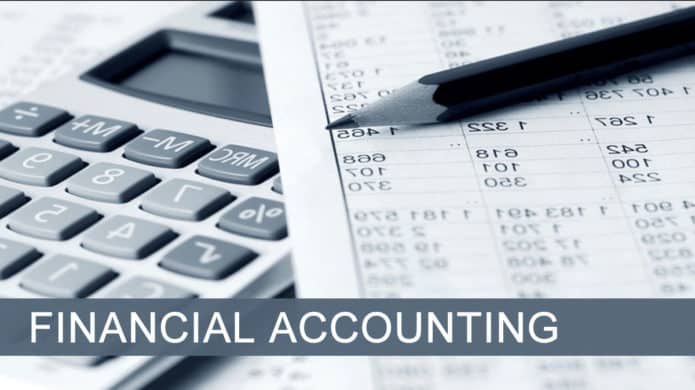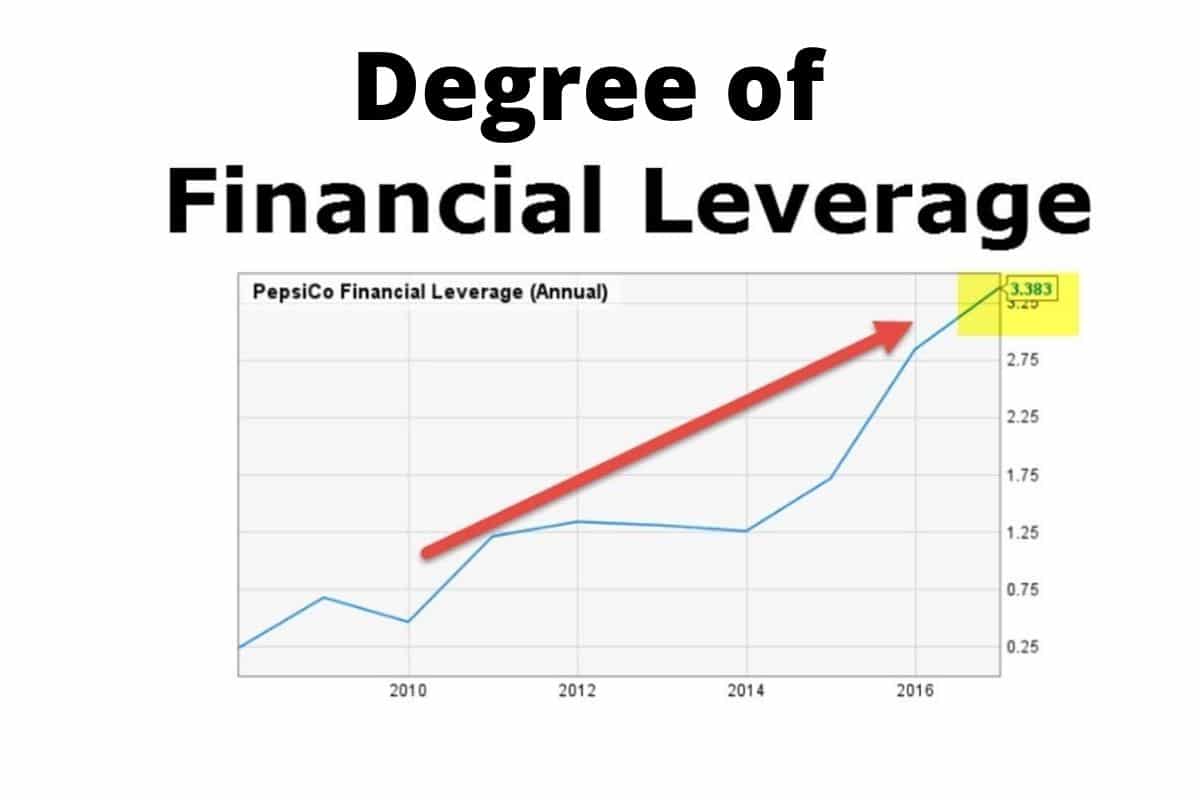Like every other discipline out there, accounting did not emerge out of thin air. Financial accounting started with the concept of stewardship (where an individual is given control over a property and then required to give an account of that property within a stipulated period of time). Sounds strange right? If yes, then let’s get on with feeding you with more pieces of information about financial accounting, rooting deeply into what its main purpose and it’s basic concepts that you weren’t aware of up until now. This post basically comes with a structure that gives you a perfect introduction to financial accounting.
But for culture’s sake, we will have to start with a definition…
What Are Financial Accounting
In its simplest terms, financial accounting is a specific branch of accounting involving a process of recording, summarising, and reporting the number of transactions resulting from business operations over a period of time. A summary of these transactions is often reflected in the preparation of financial statements. (thedentalspa) Financial Statements include the balance sheet, income statement, and cash flow statement. They record the company’s operating performance over a specified period.
Furthermore, financial accounting utilizes a series of established accounting principles. But the selection of accounting principles to use during the course of financial accounting depends on the regulatory and reporting requirements the business faces.
Financial Accounting
In financial accounting, the summation, analysis, and reporting of financial transactions that happen in a business are all part of this field of accounting. This is about making financial statements that can be used by the public. Financial accounting is regulated by both local and international accounting rules.
Financial accounting is the preparation of financial statements that can be used by the public and other people who have an interest in the company. It would be good for people to have financial information if it had these kinds of quality traits.
When making financial statements, the following must be done: These are the basic characteristics of quality.
Relevance: Relevance is the ability of financial information to make people think about what they should do. Predictive and confirmatory values are two of the things that make something important. Materiality is a part of relevance. In order for information to be considered important, it must have an impact on the economic decisions that users make when they look at financial statements.
It means that the financial statements should show the true effects of the transactions. This means that the transactions should be properly accounted for and reported. The words and numbers used in the transaction must match what happened in the real world. All of the ingredients for a true representation are complete, neutral, and free from mistakes:
Improve Qualitative Features:
- Verifiability: Verifiability means that there is an agreement between the different people who know about and use financial information. Such information must be backed up by enough evidence to follow the principle of objectivity.
- Comparability: Comparability is when accounting methods are used the same way by businesses in the same field. The idea of being consistent is under comparability. Consistency is when accounting is used the same way at all times in an entity.
People who need the information in accounting reports should be able to read and understand the reports as clearly as possible.
Before a decision can be made, financial information must be shown to the people who use it.
What Are The Basic Financial Accounting Concepts?
The following financial accounting concepts form the basis of financial accounting. They are:
#1. Matching Concept
This basic financial accounting concepts stresses that the expenses relating to a particular income must be recorded in the same period in which it occurred. It ensures that a person viewing a company’s financial statement can be assured that every aspect of a transaction has been recorded at the same time and not deferred.
#2. Materiality Concept
Reporting of all material transactions should be the aim of financial reporting. Material transactions are those transactions if omitted, that can alter an investor’s analysis of the business. The materiality concept or principle is an accounting rule that dictates any transactions or items that significantly impact the financial statements. This should be accounted for using GAAP (General Acceptable Accounting Concept) exclusively.
For example, if a transaction or event happened during the year that would affect how an investor would view the company, it must be accounted for using GAAP on the financial statements.
#3. Accrual Concept
Financial accounting concepts can be done on an accrual basis or cash basis. However, the accrual basis is often the first choice for most firms half the time.
On the flip side, an organization may also use a combination of both.
The cash basis of accounting requires that transactions go into the record books only when they result in a flow of cash.
On an accrual basis, a transaction is recorded when the transaction occurs and revenue is recognized. Once an organization selects the method, cash or accrual, it should consistently be the same.
#4. Economic Entity Concept
These financial accounting concepts assume that the owners are separate from the business and no personal transactions go into the record books. The concept ties all financial transactions to a specific business entity, and entities cannot mix their accounting records, bank accounts, assets, or liabilities. Furthermore, the economic entity concept applies to all financial entities, regardless of structure. The only exception is subsidiaries and their parent companies, which can combine their financial statements through a process called group consolidation.
Other terms of the economic entity principle may include the business entity concept or the economic entity assumption. Experts consider this concept to be one of the fundamental principles of financial accounting.
#5. Going Concern Concept
Financial statements are prepared on the assumption that a business will remain in operation in the long run. Hence, the revenue and expenses can be deferred to a different period when the company is still operating.
For the most part, Going concerned is an accounting term for a company that has the resources needed; to continue operating indefinitely until it provides evidence to the contrary. This term also refers to a company’s ability to make enough money to stay afloat or to avoid bankruptcy. Basically, if a business is not a going concern, it means bankruptcy in simple terms and liquidation of assets.
#6. Conservatism
Revenue is a financial accounting concepts that are only recognized when there is a reasonable certainty that it will be realized. Whereas expenses are recorded sooner where there is a possibility that they will be incurred. This concept tends to result in a more conservative financial statement.
In basic terms, under the conservatism principle, if there is uncertainty about incurring a loss; you should tend toward recording the loss. Conversely, if there is uncertainty about recording again, you should not record the gain.
#7. Consistency Concept
This states that once a business chooses a specific accounting reporting method, it should stick to it when going forward. By doing so, financial statements prepared in different periods can easily be compared without any issue. However, companies can change an accounting principle or method if the new version in some way improves the usefulness of the reported financial results. For instance, GAAP allows for several different ways of valuing inventory; goods held for sale in the ordinary course of business.
What Is The Main Purpose Of Financial Accounting?
The main purpose of Financial accounting is to accurately prepare an organization’s financial accounts for a specific period, otherwise known as financial statements.
Basically, financial statements serve several financial accounting purposes. Some of which include the following;
- They provide important information to shareholders and loan creditors, which can help to improve investment interest.
- It is a tool for managing both the current operations and future activities of the firm by the management internally.
- They also provide information for all types of investors and stakeholders to prepare an analysis. Half the time they achieve this feat using trends, ratios and industry comparisons.
Other interested parties of the financial statements include shareholders, creditors or lenders, suppliers, customers, unions, regulators, competitors, press, brokers or analysts, etc.
Before we move further, let’s take a look at some vital aspects of Financial statements, to complete the understanding of what the main purpose of financial accounting is.
#1. Income Statement
The primary purpose of financial accounting is to provide useful and reliable information. This statement primarily provides information about the performance of the enterprise. The statement basically matches the revenue and expense of the period and reports the net position in the form of net profit or loss.
However, it is important to note that the preparation of this statement is only for a period, so information about the performance of an enterprise. In particular, its profitability is a prerequisite to assessing the potential changes in the economic resources.
Furthermore, information about the variability of performance is important in this respect. Such a variation reflects the business risk and is vital information for investors who want to invest in such a business.
#2. Balance Sheet
Information about the financial position is primarily provided by the balance sheet. A balance sheet is a statement that shows at a point in time, the resources commanded by the enterprise and how these assets are finance. It’s generally acceptable to refer to these resources as assets. Finances come directly from owners and lenders.
What owners provide is equity, meanwhile, the sums the enterprise owners give to lenders are liabilities. Thus balance sheet has three elements. Two elements, namely equity and liabilities are shown on the right-hand side, and the third element, assets which are shown left-hand side.
Basically, the financial position of the company can affect by the economic resources it controls, its financial structure, liquidity and solvency, and its capacity to adapt to changes in the environment.
#3. Statement of Cashflow
In considering the purpose of financial accounting, this statement is in arrangement with the help of an income statement, balance sheet, and additional information. This statement which is the last one to be develop in the field of financial accounting has born a lot of importance. In the purpose of financial accounting, statement of cash flow primarily summarizes the cash inflows and outflows during the time pan as a result of the operating, investing, and financing activities of an enterprise. Information concerning changes in the financial position of an enterprise is useful in order to assess its investing, financing, and operating activities of the period. This information is useful in providing the user with a basis to assess the ability of the enterprise to generate cash and the needs of the enterprise.
Meanwhile, all the statements in our discussion above are interrelated in preparation and use because they reflect different aspects of the same transactions or other events. The purpose of financial accounting is to prove information, although each statement provides information that is different from the others, none is likely to serve only a single purpose or provide all the information necessary for the particular needs of users. For example, a profit and loss account provides an incomplete picture of performance unless it is used in conjunction with the balance sheet and statement of cash flow.
Introduction to Financial Accounting PDFs
So, listed below are pretty useful Introduction to financial accounting PDFs that’s capable of giving you a full grasp of what financial accounting basically entails.
- Introduction to F.A
- Accounting: Meaning, Nature and Role
- Acc 1311 (Introduction to FA)
- Introduction to Financial Accounting – University of Alberta
- Introduction to F.A – Chapter 1
Introduction to Financial Accounting Textbooks
The following are list of Financial accounting textbooks that can help you begin your explorations into the field of Financial accounting.
#1. Principles of Accounting (Financial Accounting volume 1)
Principles of Accounting helps to meet the scope and sequence requirements of a two-semester accounting course that covers the fundamentals of financial and managerial accounting. Due to the comprehensive nature of the material, the book comes in two volumes. This book specifically tries to meet appeal to both accounting and non-accounting majors, exposing students to the core concepts of accounting in familiar ways to build a strong foundation that covers across business fields.
Furthermore, each chapter opens with a relatable real-life scenario for today’s college students. Thoughtful and practical examples appear throughout each chapter, allowing students to build on emerging accounting knowledge. Reinforcement of concepts further come through applicable connections to more in-depth business processes, immersing students into the “why” as well as the “how” aspects of accounting. Basically, this is in order to reinforce concepts and promote comprehension over rote memorization.
#2. Accounting Book – Bookkeeping, Principles, and Statements
CFI’s Principles of Accounting book is free and available for anyone to download as a pdf. Learn about the most important accounting concepts, such as bookkeeping, the double-entry system, accruals and matching principles, how to prepare financial statements, and more!
#3. Financial Accounting and Accounting Standards
This book will help you learn about the challenges facing financial reporting and creating accounting statements.
Other lists of financial accounting textbooks include;
- Introduction to F.A and Reporting Financial Accounting and Reporting
- Financial Accounting
- Financial Accounting For Dummies
Introduction to Financial Accounting Courses
The following is a list of financial accounting courses, to set you on the right trajectory in the world of accounting. For the most part, these courses include both free and paid courses. But here’s something you should know though, paid courses give you the best chance at getting as much pieces of information as you would need to head down the right path.
Hey, I’m not saying free courses are totally a bad idea, just that they do not really go into details like paid courses do.
Either way, whether free or paid, the goal is to get useful information, so feel free to go for anyone you’re comfortable with.
#1. Accounting: From Beginner to Advanced
This is a guide to learning accounting like never before with easy tips to fast-track the process. It is easy to understand and ranks as the #1 accounting course online.
#2. Introduction to Finance, Accounting, Modelling, and Valuation
This PDF affords you the luxury to learn Finance & Accounting from Scratch by an Award Winning MBA Professor, Ivy Grad. He worked at Goldman & VC
#3. Accounting Made Easy: A Quick Guide to Financial Accounting
It helps you understand all you should know about bookkeeping records, building an income Statement and a Balance Sheet. It is also a guide to understanding the accounting equation and the principle of double-entry. In the end, you should be able to tell the difference between debits and credits and analyze a company’s performance. This is on the basis of figures in your company’s annual report.
#4. Financial Accounting: The Complete Introductory Crash Course
With this course, you can familiarize yourself with the basics of Financial Accounting. This includes every information on financial Statements, Debits and Credits, the Accounting Cycle, and more.
#5. Fundamentals of Financial Accounting
This course covers everything on financial Accounting, basics of Accounting, Accounting Business, Source Documents, and so on.
What Does Financial Accounting Mean in Accounting?
Financial accounting is the process of recording, examining, and summarizing each transaction made by a company or organization in order to evaluate its stability and financial health.
What Fundamental Ideas Constitute Financial Accounting?
Maintain an organized log of your money transactions. Defend commercial property against unauthorized and inappropriate use. Determine the net profit or loss that was made or suffered as a result of conducting business operations during a specific accounting period.
What Does Financial Accounting Provide as Its Primary Function?
Financial accounting is used to create financial statements for businesses that reflect a specified time period. The balance sheet, income statement, and statement of cash flow are the three types of financial statements that are most frequently used.
What Distinguishes Accounting From Financial Accounting?
Finance is a broader word for the management of assets and obligations and the planning of future growth, whereas accounting is more concerned with the daily movement of money into and out of a firm or institution.
What Is a Full Ipsas?
The International Public Sector Accounting Standards Board (IPSASB) is the organization that issues IPSAS (IPSASB).
Disclaimer!!!
Business Yield is in no way in partnership with any company link containing the contents; PDFs, textbooks and courses, shared on its post.
What is financial accounting and example?
For example, if a transaction or event happened during the year that would affect how an investor would view the company, it must be accounted for using GAAP on the financial statements.
What are the 3 Definition of financial accounting?
In its simplest terms, financial accounting is a specific branch of accounting involving a process of recording, summarising, and reporting the number of transactions resulting from business operations over a period of time.






